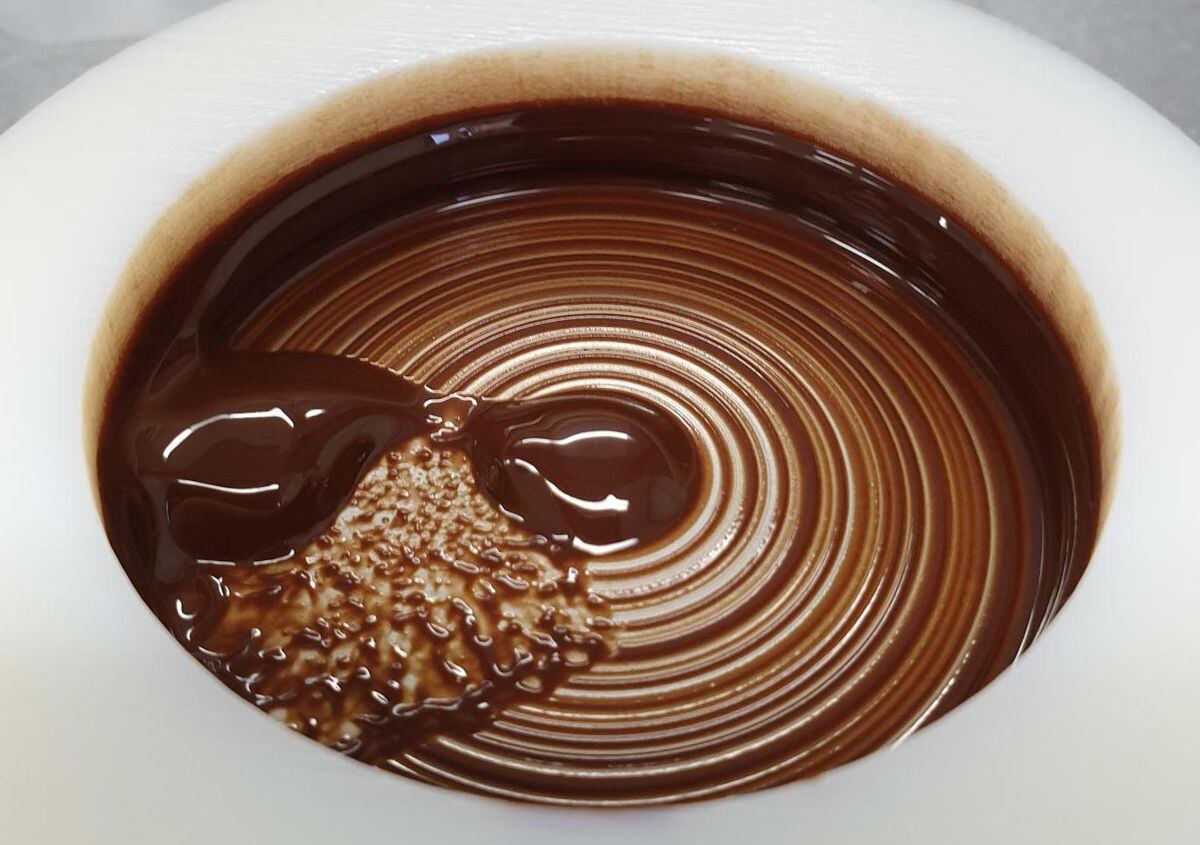The researchers believe that the techniques used in the study can be applied to the investigation of other foods.
 Micrograph of melted dark chocolate. Photo: Siavash Sultan Ahmadi/Leeds School of Food Science and Nutrition (UK). EFE
Micrograph of melted dark chocolate. Photo: Siavash Sultan Ahmadi/Leeds School of Food Science and Nutrition (UK). EFE
A team of scientists has discovered why chocolate is so irresistible, and that not only because of the taste, But it is related The process by which it changes in the mouth From a hard emulsion to a soft emulsion due to its special ingredients and combination saliva.
It was studied by researchers from Leeds School of Food Science and Nutrition (UK)who analyzed this thoroughly chemical process that occur in the mouth when eating a piece of chocolate and the pleasure that it has Touch and feel.
The study whose findings were published in Journal of Applied and Interface Materials ACS, It could, according to officials, contribute to the development of a new generation of chocolate that has the same feel and texture but is Healthier to consume.
Fat plays a major role The moment a piece of chocolate comes into contact with the tongue, after which the solid cocoa particles are released and become important in terms of sense of touch, so the deep fats inside the chocolate play a somewhat limited role and can be reduced without having an effect on the body. The feeling of pleasure that produce consumption.
You may be interested: A dangerous headache for more than 50 years.
Testing was done with a premium brand of dark chocolate on a surface similar to an artificial language designed at the University of Leeds, The researchers used analytical techniques from an engineering field called “Tribologywhich studies the friction, wear, and lubrication that occur during contact between solid, moving surfaces.
In this case, check this interaction between components chocolate and saliva, And how, when it comes into contact with the tongue, it releases a A fatty film covering the tongue and other surfaces of the mouth and it is this film that makes this product feel soft for as long as it is in the mouth.
The researchers believe that the techniques used in the study It can be applied to the investigation of other foods that undergo a phase change, in which matter changes from a solid to a liquid, such as ice cream, margarine, or cheese.
The project on which this work is framed has received funding from the European Research Council under the European Union’s Horizon 2020 research and innovation programme.
No wonder its scientific name is theobroma L. cacao, Greek word what does it mean “ambrosia” EFE

“Social media evangelist. Student. Reader. Troublemaker. Typical introvert.”

:quality(85)/cloudfront-us-east-1.images.arcpublishing.com/infobae/TEQF6EONZRFGLLLDIDD4L2O4EE.jpg)

:quality(75)/cloudfront-us-east-1.images.arcpublishing.com/elcomercio/XU32LRAEZFDDPNVHLFU3CKVBYY.jpg)


More Stories
Venezuela ranks fourth in female leadership in science and technology in Latin America
In Portuguesa and Sucre they explore the wonderful world of science
The university court overturns the expulsion of two teachers and a chemical sciences student